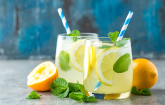The alcohol packaging market is driven by increasing global consumption of alcoholic beverages, rising demand for premium and sustainable packaging, and advancements in material innovation. Consumers are shifting towards eco-friendly and aesthetically appealing packaging, pushing manufacturers to adopt recyclable and biodegradable materials. The growth of e-commerce and digital retailing has also fueled the demand for secure and visually appealing packaging solutions.
LEWES, Del., April 7, 2025 /PRNewswire/ -- The global alcohol packaging market is projected to grow from USD 72.96 billion in 2024 to approximately USD 105.78 billion by 2032, reflecting a compound annual growth rate (CAGR) of 4.70% during the forecast period.
Download PDF Brochure: https://www.marketresearchintellect.com/download-sample/?rid=964743
202 - Pages
126 – Tables
37 – Figures
Scope Of The Report
REPORT ATTRIBUTES |
DETAILS |
STUDY PERIOD |
2020-2031 |
BASE YEAR |
2024 |
FORECAST PERIOD |
2025-2032 |
HISTORICAL PERIOD |
2020-2024 |
UNIT |
Value (USD Billion) |
KEY COMPANIES PROFILED |
Amcor plc, Ball Corporation, Crown Holdings, Inc., Ardagh Group S.A., Owens-Illinois, Inc., Smurfit Kappa Group, Berry Global Inc., Gerresheimer AG, Vidrala S.A., Mondi Group, DS Smith Plc, and WestRock Company |
SEGMENTS COVERED |
By Type, By Application And By Geography |
CUSTOMIZATION SCOPE |
Free report customization (equivalent to up to 4 analysts' working days) with purchase. Addition or alteration to country, regional & segment scope |
Alcohol Packaging Market Overview
1. Growing Demand for Sustainable Packaging
The increasing emphasis on environmental sustainability is driving innovations in alcohol packaging. Consumers and regulatory bodies are pushing for eco-friendly alternatives, leading manufacturers to adopt biodegradable, recyclable, and reusable packaging materials. Glass bottles, recycled aluminum cans, and plant-based bioplastics are gaining traction due to their reduced carbon footprint. Many companies are also investing in lightweight packaging to minimize transportation emissions. Additionally, the use of water-based inks and natural adhesives in labeling enhances sustainability. Brands that integrate sustainable practices into their packaging strategies are witnessing stronger consumer loyalty and compliance with evolving regulations. As climate concerns grow, the market is shifting towards circular economy models, where materials are reused and repurposed. This trend is expected to shape the competitive landscape, compelling key players to continuously innovate in sustainable packaging solutions to meet both consumer expectations and governmental policies focused on reducing waste and pollution.
2. Premiumization and Brand Differentiation
With increasing disposable incomes and evolving consumer preferences, the demand for premium alcohol packaging is on the rise. High-end spirits, wines, and craft beverages are driving the need for sophisticated, customized packaging solutions. Embossed labels, foil stamping, high-quality glass, and unique structural designs are becoming more prevalent as brands strive to create a luxurious experience. Premium packaging enhances brand recognition and plays a crucial role in influencing purchase decisions, especially in duty-free retail and gift packaging segments. Additionally, limited-edition packaging, collaborations with artists, and personalized labeling are emerging as key trends to attract niche consumer segments. As competition intensifies, brands are leveraging innovative packaging designs to stand out on retail shelves and enhance their storytelling. The increasing preference for luxury and artisanal alcoholic beverages further accelerates this trend, compelling manufacturers to blend aesthetics with functionality in their packaging strategies.
3. Growth of E-commerce and Digital Retailing
The rise of e-commerce platforms is reshaping the alcohol packaging industry, with brands adapting to the specific requirements of online sales. Unlike traditional retail, where packaging primarily serves as a marketing tool, e-commerce demands robust and protective packaging solutions that prevent breakage during transit. Many companies are investing in durable yet lightweight materials that balance protection and sustainability. Tamper-evident seals, minimalist yet informative designs, and smart packaging with QR codes for authenticity verification are becoming crucial for online retail success. Subscription-based alcohol delivery services and direct-to-consumer (DTC) models are further driving the need for innovative packaging solutions tailored for safe shipping. Additionally, digital packaging trends such as augmented reality (AR) labels, where consumers can scan packaging to access immersive brand stories, are gaining traction. As online alcohol sales continue to grow, packaging strategies will evolve to cater to consumer expectations for both security and premium brand experiences.
4. Shift Towards Lightweight and Cost-Effective Materials
Rising raw material costs and the need for sustainability are prompting manufacturers to adopt lightweight packaging solutions. Glass, though widely used, is being supplemented with alternative materials such as PET (polyethylene terephthalate) and recycled aluminum due to their cost-efficiency and ease of transport. Lightweight packaging helps reduce shipping costs and minimizes carbon emissions, making it an attractive option for companies seeking to improve supply chain efficiency. Many brands are also exploring bag-in-box solutions, which not only reduce weight but also extend the shelf life of beverages. Additionally, the shift towards mono-material packaging—where a single recyclable material is used for the entire packaging structure—is gaining popularity. This trend aligns with the broader sustainability movement while also offering operational cost savings for manufacturers. As more brands look to streamline costs while maintaining quality, lightweight packaging innovations will continue to play a pivotal role in the market's expansion.
Download Sample Report Now: https://www.marketresearchintellect.com/download-sample/?rid=964743
5. Smart Packaging and Digital Innovations
Technology is playing an increasing role in alcohol packaging, with smart packaging solutions gaining momentum. Brands are integrating features like QR codes, NFC (Near Field Communication) tags, and blockchain authentication to enhance consumer engagement and traceability. QR codes on bottles allow consumers to access product details, cocktail recipes, and brand storytelling, enhancing the overall experience. Anti-counterfeit technologies embedded in packaging materials are also crucial, especially in the premium alcohol segment, where counterfeit products pose a significant risk. Temperature-sensitive labels that change color based on the beverage's optimal drinking temperature are another innovative trend. Smart packaging is not just about aesthetics but also functionality, as brands seek to improve customer interaction and safety. As digital connectivity continues to shape consumer expectations, the alcohol packaging market is expected to see further integration of technology-driven features that enhance both security and brand-consumer relationships.
6. Regulatory Challenges and Compliance
The alcohol packaging market is heavily influenced by stringent regulations, which vary across regions. Governments are imposing stricter guidelines on labeling, sustainability, and responsible drinking awareness. Many countries require health warnings and detailed ingredient listings on packaging, increasing the complexity of label design and compliance. Sustainability regulations are also driving changes, with bans on single-use plastics and mandates for higher recycled content in packaging materials. The European Union, for example, has set ambitious recycling targets that impact how alcohol brands package their products. In the U.S., regulations on child-resistant closures for certain alcoholic beverages are also shaping packaging innovations. Adhering to these regulations while maintaining brand aesthetics and cost efficiency remains a challenge for manufacturers. Companies that proactively integrate regulatory compliance into their packaging strategies will gain a competitive edge in navigating global markets, ensuring their products remain accessible while meeting evolving legal standards.
7. Emerging Markets and Expansion Opportunities
Developing economies in Asia-Pacific, Latin America, and Africa present lucrative growth opportunities for the alcohol packaging market. Rapid urbanization, rising disposable incomes, and changing lifestyle trends are fueling alcohol consumption in these regions. Additionally, the shift towards premium alcoholic beverages is creating demand for innovative and aesthetically appealing packaging solutions. In countries like India and China, expanding retail networks and increasing e-commerce penetration are accelerating the need for protective and visually appealing alcohol packaging. The Middle East is also witnessing growth in alcohol packaging due to the rise in tourism and hospitality sectors, where premium packaging plays a key role. However, cultural and regulatory challenges in some markets require manufacturers to adapt their packaging strategies accordingly. Companies investing in localized production and distribution networks, along with culturally relevant packaging designs, are poised to capitalize on these emerging markets and gain a foothold in the expanding global alcohol industry.
8. Future Trends and Market Outlook
The alcohol packaging market is set for continued evolution, driven by technological advancements, sustainability goals, and shifting consumer preferences. The industry is expected to see greater adoption of bio-based plastics, minimalist designs, and refillable packaging systems that align with circular economy principles. Personalization will also become a key differentiator, with brands offering customized labels and limited-edition packaging to engage consumers. Digital printing technologies will enable brands to create unique packaging designs with greater flexibility. Moreover, collaborations between alcohol brands and luxury packaging designers are likely to gain prominence, enhancing product exclusivity. Smart packaging technologies such as interactive labels and IoT-enabled tracking systems will further enhance brand-consumer interactions. As brands navigate sustainability regulations and supply chain disruptions, agility and innovation will be critical for success. The market's future lies in balancing cost efficiency, environmental responsibility, and consumer-driven aesthetics to create packaging solutions that define the next generation of alcoholic beverages.
Geographic Dominance:
The alcohol packaging market exhibits strong geographic dominance in North America, Europe, and the Asia-Pacific region. North America leads due to high alcohol consumption rates, strong demand for premium packaging, and growing sustainability initiatives. The U.S. dominates with increasing e-commerce alcohol sales, driving the need for protective and visually appealing packaging. Europe follows closely, with strict sustainability regulations pushing manufacturers towards eco-friendly solutions like lightweight glass and biodegradable materials. Premiumization trends in countries like Germany, France, and the UK further fuel innovation in packaging design. Meanwhile, Asia-Pacific is witnessing the fastest growth, driven by rising disposable incomes, urbanization, and shifting consumer preferences towards branded alcoholic beverages. Countries like China, India, and Japan are expanding their retail and e-commerce sectors, increasing the demand for innovative alcohol packaging. Emerging markets in Latin America and the Middle East also present opportunities as changing lifestyles drive higher alcohol consumption and premium packaging adoption.
Alcohol Packaging Market Key Players Shaping the Future
Key players shaping the future of the alcohol packaging market include Amcor plc, Ball Corporation, Crown Holdings, Inc., Ardagh Group S.A., Owens-Illinois, Inc., Smurfit Kappa Group, Berry Global Inc., Gerresheimer AG, Vidrala S.A., Mondi Group, DS Smith Plc, and WestRock Company. These companies are driving innovation through sustainable packaging solutions, lightweight materials, and advanced printing technologies. Strategic partnerships, mergers, and acquisitions are further strengthening their market positions, while investments in eco-friendly and smart packaging are enhancing consumer engagement and regulatory compliance.
Alcohol Packaging Market Segment Analysis
The Alcohol Packaging Market is segmented based on By Type, By Application and Geography, offering a comprehensive analysis of the industry.
1. By Type
- Glass Bottles – Dominant packaging format due to premium appeal, recyclability, and widespread use in wine and spirits.
- Metal Cans – Growing in popularity for beer and ready-to-drink (RTD) beverages due to portability and sustainability.
- Plastic Bottles – Used for economy alcohol brands, but facing challenges due to environmental concerns.
- Paper-Based Packaging – Emerging as a sustainable alternative, including carton-based packaging for wines and spirits.
2. By Application
- Beer – High demand for glass bottles and metal cans due to consumer preferences and preservation needs.
- Wine & Spirits – Glass bottles dominate, with innovations in lightweight glass and luxury packaging.
- Ready-to-Drink (RTD) Alcoholic Beverages – Increasing use of metal cans and sustainable packaging due to convenience.
3. By Geography
- North America – Strong demand for premium and sustainable packaging solutions, led by the U.S.
- Europe – Stricter regulations driving innovation in eco-friendly alcohol packaging.
- Asia-Pacific – Fastest-growing market with increasing alcohol consumption in China, India, and Japan.
- Latin America & Middle East – Expanding market due to changing lifestyles and rising disposable income.
Packaging
The alcohol packaging market is evolving with a strong emphasis on sustainability, innovation, and premiumization. Glass bottles remain the dominant choice for wine and spirits, offering aesthetic appeal and recyclability. Metal cans are gaining traction for beer and ready-to-drink (RTD) beverages due to convenience and eco-friendliness. Paper-based and biodegradable packaging solutions are emerging to meet sustainability goals. Advanced printing techniques and smart packaging technologies are enhancing branding and consumer engagement, shaping the future of alcohol packaging globally.
Our related Reports
Global Beverage Carton Packaging Equipment Market is categorized based on Application (Milk, Juices, Alcoholic beverages, Dairy products) and Product (Carton sealers, Carton erectors, Tray formers, Carton closers, Strapping machines) and geographical regions.
Global Feed Packaging Market is categorized based on Application (Bags, Bulk Containers, Boxes, Pallets) and Product (Feed Storage, Distribution, Transport, Retail Packaging) and geographical regions.
Global Cooked Cereal Market is categorized based on Type (Oatmeal, Grits, Farina, Others) and Application (Supermarkets-Hypermarkets, Convenience Stores, Online Retail, Others) and geographical regions.
Global Gluten-Free Breakfast Cereals Market is categorized based on Type (Corn Flakes, Rice Flakes, Oats, Others;) and Application (Supermarkets-Hypermarkets, Convenience Stores, Online Retail, Others;) and geographical regions.
Global Organic Breakfast Cereals Market is categorized based on Type (Conventional Organic Cereals, Gluten-free Organic Cereals) and Application (Supermarkets/Hypermarkets, Convenience Stores, Independent Retailers, Online Sales, Others) and geographical regions.
Global Diesel Air Compressors Market is categorized based on Application (Portable, Stationary, Rotary screw, Reciprocating, Centrifugal) and Product (Industrial power supply, Construction, Mining, Agriculture, Marine industry, Automotive service) and geographical regions.
About Us: Market Research Intellect
Welcome to Market Research Intellect, where we lead the way in global research and consulting, proudly serving over 5,000 esteemed clients worldwide. Our mission is to empower your business with cutting-edge analytical research solutions, delivering comprehensive, information-rich studies that are pivotal for strategic growth and critical revenue decisions.
Unmatched Expertise: Our formidable team of 250 highly skilled analysts and subject matter experts (SMEs) is the backbone of our operations. With extensive training in advanced data collection and governance, we delve into over 25,000 high-impact and niche markets. Our experts seamlessly integrate modern data collection techniques, robust research methodologies, and collective industry experience to produce precise, insightful, and actionable research.
Diverse Industry Coverage: We cater to a wide array of industries, ensuring that our insights are both relevant and specialized. Our expertise spans: Energy, Technology, Manufacturing and Construction, Chemicals and Materials, Food and Beverages
Having collaborated with numerous Fortune 2000 companies, we bring unparalleled experience and reliability to meet all your research needs. Our proven track record reflects our commitment to excellence and client satisfaction.
Contact Us:
Mr. Edwyne Fernandes
Market Research Intellect
Call Us on: +1 743 222 5439
Email: sales@marketresearchintellect.com
Web: https://www.marketresearchintellect.com/
Logo: https://mma.prnewswire.com/media/2483702/Market_Research_Intellect_Logo.jpg





Share this article